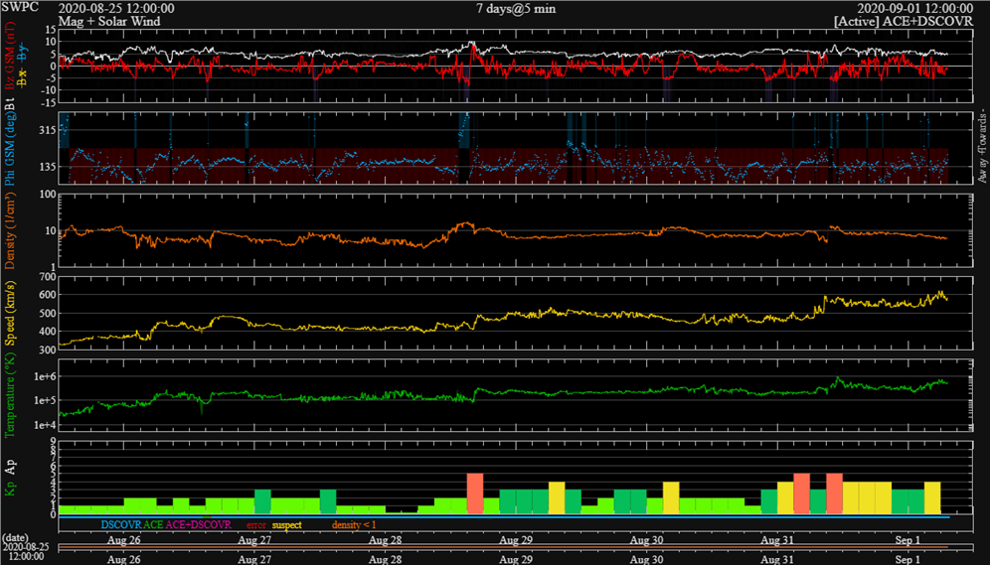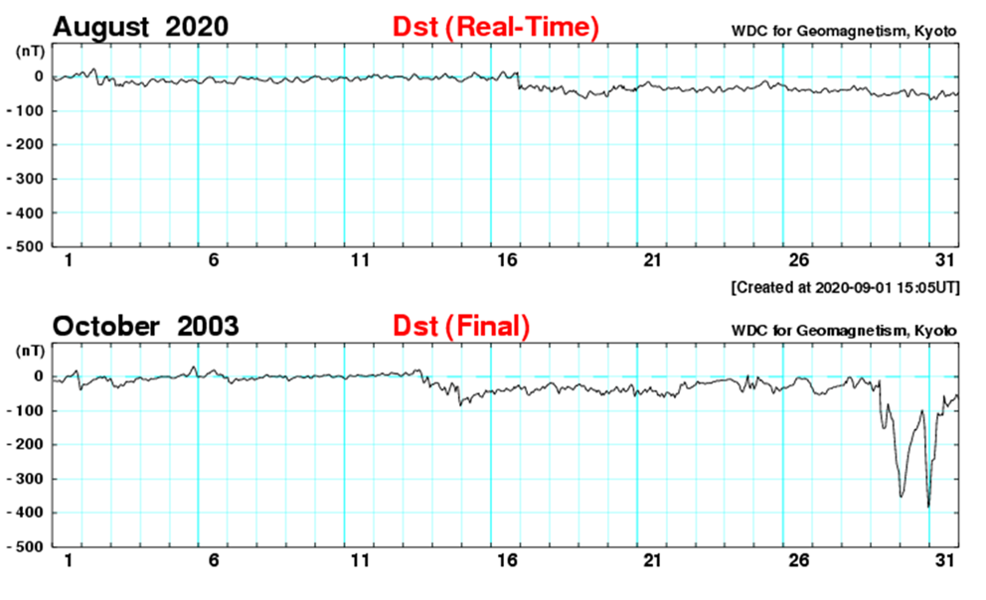Geomagnetic activity reached minor storming conditions on 28 and 31 August following the arrival of enhanced wind streams related to positive polarity coronal holes. Positive polarity means that the (open) magnetic field lines from the coronal hole are directed away from the Sun (blue curve underneath). Solar wind speed (yellow curve) has been gradually rising from 400 km/s to its current (1 September) values around 600 km/s (DSCOVR). The estimated planetary K index (Kp) as provided by NOAA is at the bottom of the graph. "0" means quiet, "9" means extremely severe geomagnetic storming. The observed minor storm values are right in the middle (Kp=5), keeping in mind that the K-index is a quasi-logarithmic index. Of note is that in Dourbes (Belgium), the geomagnetic activity reached only active conditions (K = 4).

So far, there have been only 4 days in 2020 when geomagnetic activity reached minor storm levels. The previous times were on 19 February and 20 April. At those occasions, the source of the geomagnetic storm was the passage of an interplanetary coronal mass ejection (ICME), i.e. a cloud of charged particles ejected by the Sun in the direction of the Earth a few days earlier and affecting the geomagnetic field. See the STCE Newsletters of 27 February and 30 April 2020 at http://www.stce.be/newsletter/newsletter.php . Based on other geomagnetic parameters such as the Dst index (WDC Kyoto ; see this Newsitem at http://www.stce.be/news/483/welcome.html ), the currently ongoing storm is the strongest of the four with preliminary Dst values near -67 nT. This of course pales compared to severe geomagnetic storms such as in October 2003, when Kp reached 9 and Dst was at -383 nT.






